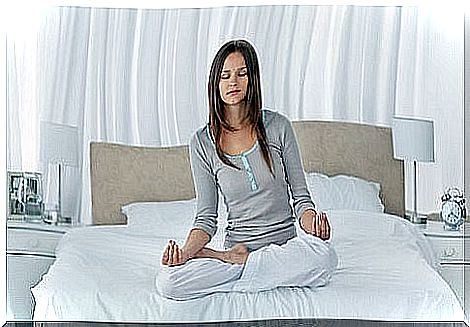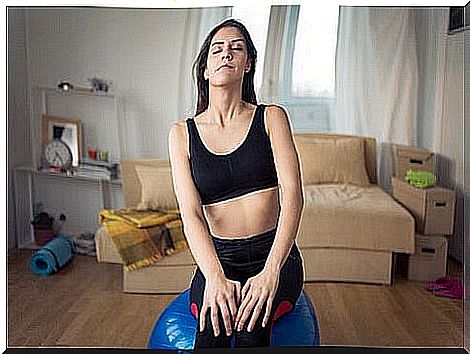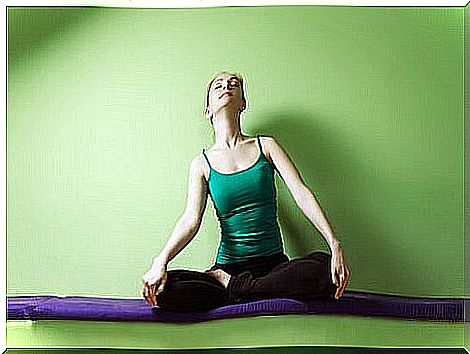5 Breathing Exercises That Help You Control Anxiety And Stress
Anxiety and stress are disorders that regularly affect people of all ages, and more and more people. That is why, in turn, more and more people are looking for techniques or therapies to control anxiety and stress.
These two conditions are defense mechanisms that the body activates in situations of challenge or danger that, although they can be sporadic, tend to generate physical and emotional reactions.
The most worrying thing is that they have become so common that many are unaware of how important it is to pay attention to them, especially at the time when these psychological conditions become recurrent.
Although not all cases require professional help to treat, it is essential to adopt healthy practices that help to manage it properly.
For this reason, in the following space we want to share 5 breathing exercises that, in the face of these problems, could help you relax. Discover them!
Breathing techniques to control anxiety and stress: are they effective?
One of the first questions that may arise regarding this type of technique is, are there really breathing techniques that allow us to reduce the impact of anxiety and stress in our day to day?
Well, it must be said that within the most common psychological techniques to treat these conditions we undoubtedly have valuable tools designed to train us in relaxation and breathing.
Thus, the Jacobson’s progressive relaxation technique, for example, is a highly effective resource in these cases, where breathing advice is also included.
Likewise, studies such as the one carried out by a team of researchers from the University of Camerino, in Italy, explain that deep (diaphragmatic) breathing is effective in giving us very adequate states of relaxation when we go through moments of excitement and nervousness.
Therefore, the advice that we go on to detail could be useful to better manage moderate stress or anxiety.
For more severe and recurring conditions, it is best to consult a psychologist or psychiatrist.
1. Control anxiety and stress: measured breathing

The measured breathing exercise is a relaxation therapy that, in a matter of minutes, helps to ease physical and mental tension. Its regular practice helps us calm the mind and improve concentration.
How to do it?
- Standing, sitting or lying on a mat, drop your shoulders and relax your hands while keeping your back straight, without tensing it.
- Close your eyes and inhale slowly, counting for 5 to 7 seconds.
- Then breathe out slowly through your nose for a count of 7.
- Repeat the exercise for 2-3 minutes at a time, maintaining a comfortable position.
2. Abdominal breathing
Abdominal breathing is a simple technique that reduces physical and emotional stress while purifying the air in the lungs.
Exercise releases muscle tension and, in turn, improves blood pressure and heart rate.
How to do it?
- In the position that you consider most comfortable, always with your back straight, put one hand on the chest and the other on the abdomen.
- Inhale and see that the diaphragm inflates with enough air to widen the lungs.
- Breathe out slowly and take 6 to 10 slow breaths per minute.
- Repeat the exercise for 3 minutes.
3. Control anxiety and stress: counting breathing

With the counting breathing exercise you can release the body of stress as you enter a deep state of concentration and relaxation.
According to Buddhism, it is an activity that can provide wisdom as well as health benefits.
How to do it?
- Sit in a comfortable position, with your back straight and your head tilted slightly forward.
- Close your eyes and inhale slowly for 2 seconds.
- Then count another 3 seconds and breathe out.
- Then inhale and count 4 seconds.
- To finish, exhale slowly, counting 4 or 5 seconds.
- Repeat the exercise for 3-5 minutes.
4. Control anxiety and stress: bumblebee breathing
Bumblebee breathing is an exercise in which you will emit a slight sound while connecting your body and mind to obtain a pleasant feeling of well-being.
It is ideal for relieving episodes of stress and anxiety, especially when accompanied by muscle tension and headaches.
How to do it?
- In the position that you like, relax your shoulders and keep your back straight, without tensing it.
- Slightly close your throat so that you can hear the sound of the air when you breathe in.
- Cover your ears with your thumbs and your eyes with your fingers.
- Keep your lips half closed and your teeth parted, with your jaw relaxed.
- Exhale gently, vibrating your vocal cords.
- Do 5 or 10 repetitions.
5. Progressive breathing

This type of breathing can be ideal for those cases in which stress is accompanied by muscle tension and pain.
Its practice relaxes the body and, at the same time, can help you focus the mind to reduce anxiety.
How to do it?
- In a comfortable position, close your eyes and focus on tensing and releasing your muscles.
- Start from the bottom up, for example, focusing first on the feet, thighs, and glutes.
- Then move onto the hands, arms, and shoulders, always taking deep breaths.
- Lastly, focus on your back, neck, and head.
- Throughout the exercise you should maintain a slow and deep inspiration, counting to 5.
Are you ready to try it at home? Although there are many techniques and remedies to combat anxiety and stress, the regular practice of these exercises can become a very useful complementary therapy.









